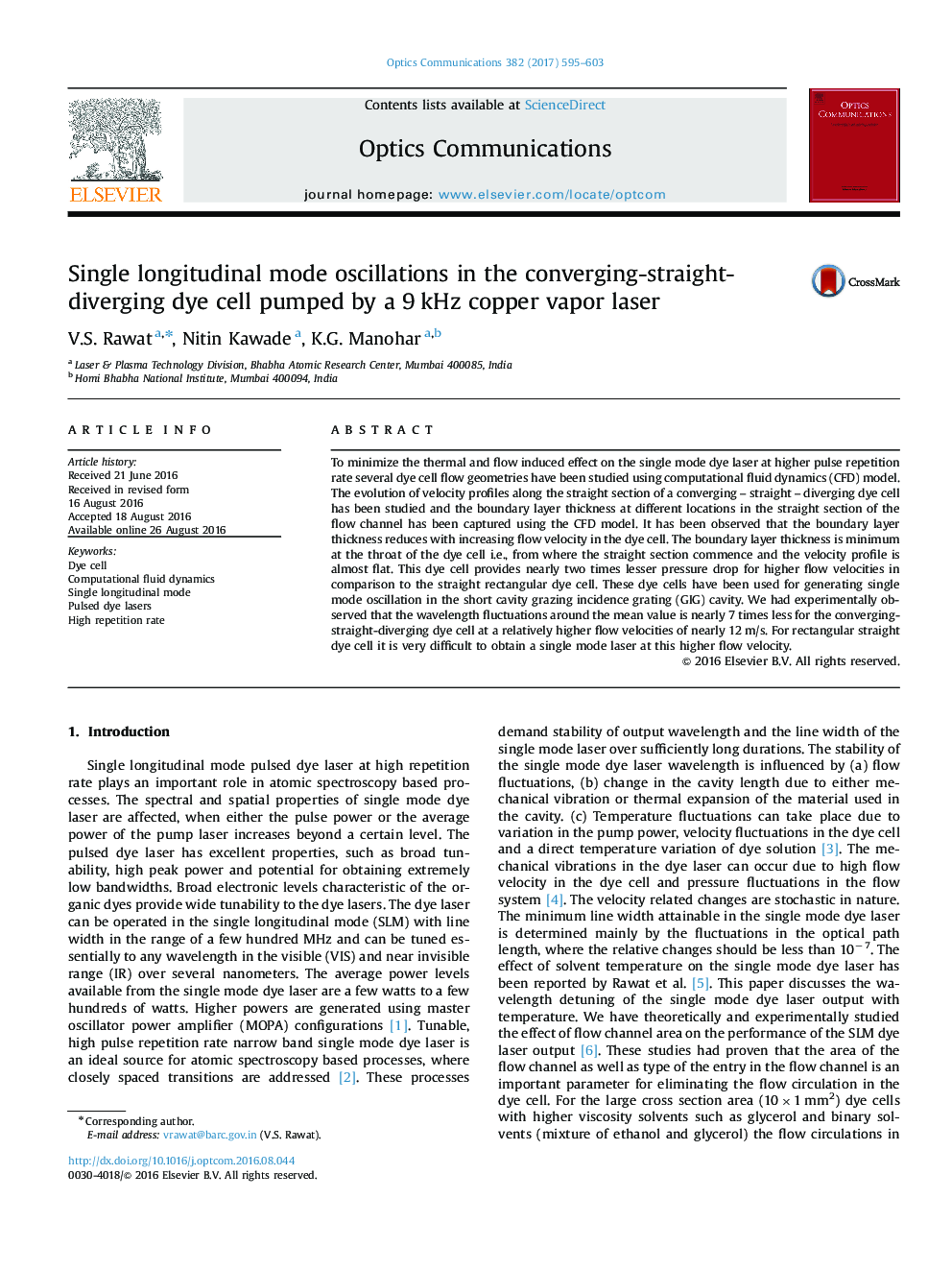| Article ID | Journal | Published Year | Pages | File Type |
|---|---|---|---|---|
| 7927598 | Optics Communications | 2017 | 9 Pages |
Abstract
To minimize the thermal and flow induced effect on the single mode dye laser at higher pulse repetition rate several dye cell flow geometries have been studied using computational fluid dynamics (CFD) model. The evolution of velocity profiles along the straight section of a converging - straight - diverging dye cell has been studied and the boundary layer thickness at different locations in the straight section of the flow channel has been captured using the CFD model. It has been observed that the boundary layer thickness reduces with increasing flow velocity in the dye cell. The boundary layer thickness is minimum at the throat of the dye cell i.e., from where the straight section commence and the velocity profile is almost flat. This dye cell provides nearly two times lesser pressure drop for higher flow velocities in comparison to the straight rectangular dye cell. These dye cells have been used for generating single mode oscillation in the short cavity grazing incidence grating (GIG) cavity. We had experimentally observed that the wavelength fluctuations around the mean value is nearly 7 times less for the converging-straight-diverging dye cell at a relatively higher flow velocities of nearly 12Â m/s. For rectangular straight dye cell it is very difficult to obtain a single mode laser at this higher flow velocity.
Related Topics
Physical Sciences and Engineering
Materials Science
Electronic, Optical and Magnetic Materials
Authors
V.S. Rawat, Nitin Kawade, K.G. Manohar,
